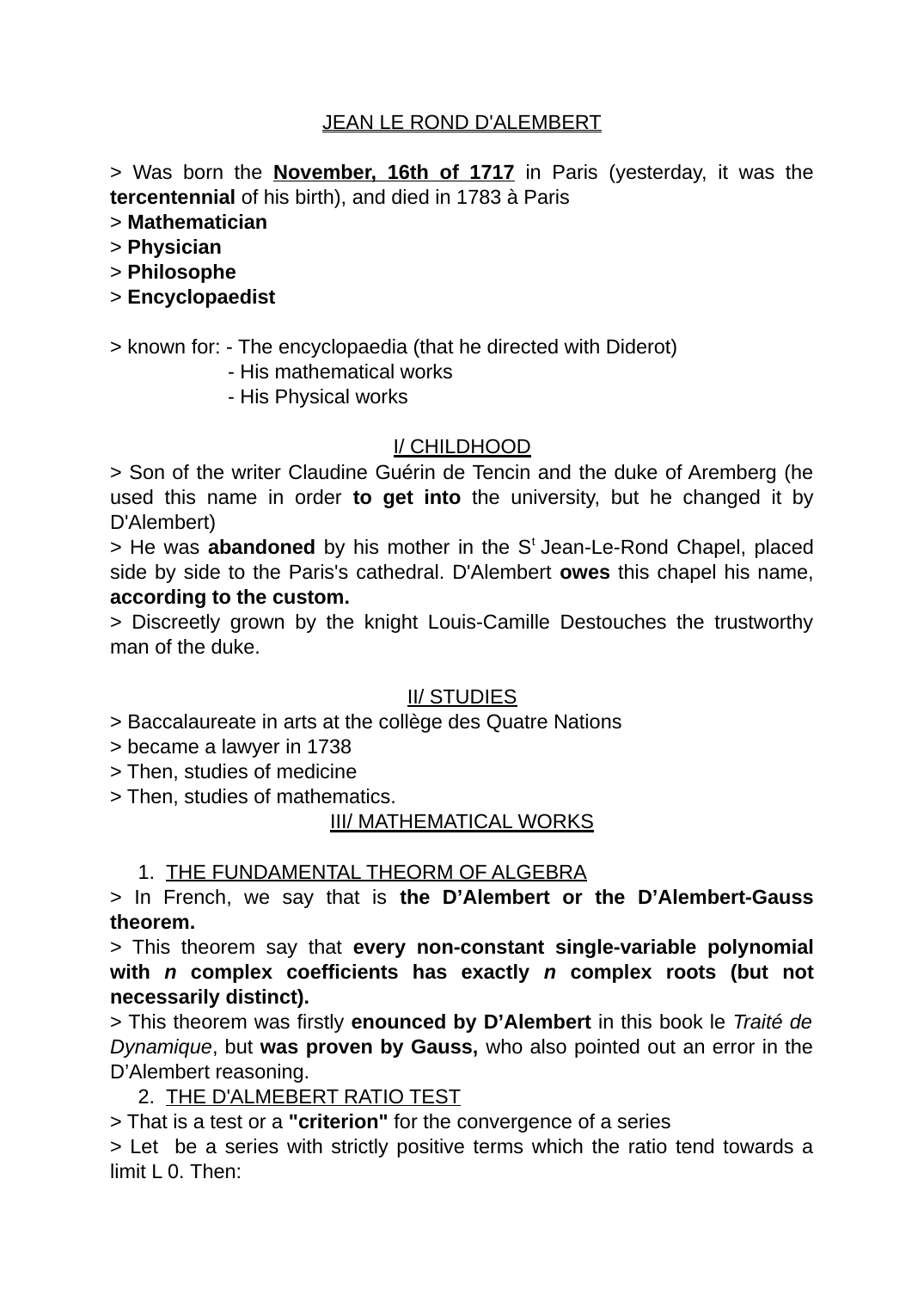Jean le rond d'Alembert et les sciences (anglais)
Publié le 14/09/2021
Extrait du document
«
JEAN LE ROND D'ALEMBERT
> Was born the November, 16th of 1717 in Paris (yesterday, it was the
tercentennial of his birth), and died in 1783 à Paris
> Mathematician
> Physician
> Philosophe
> Encyclopaedist
> known for: - The encyclopaedia (that he directed with Diderot)
- His mathematical works
- His Physical works
I/ CHILDHOOD
> Son of the writer Claudine Guérin de Tencin and the duke of Aremberg (he
used this name in order to get into the university, but he changed it by
D'Alembert)
> He was abandoned by his mother in the S t
Jean-Le-Rond Chapel, placed
side by side to the Paris's cathedral.
D'Alembert owes this chapel his name,
according to the custom.
> Discreetly grown by the knight Louis-Camille Destouches the trustworthy
man of the duke.
II/ STUDIES
> Baccalaureate in arts at the collège des Quatre Nations
> became a lawyer in 1738
> Then, studies of medicine
> Then, studies of mathematics.
III/ MATHEMATICAL WORKS
1.
THE FUNDAMENTAL THEORM OF ALGEBRA
> In French, we say that is the D’Alembert or the D’Alembert-Gauss
theorem.
> This theorem say that every non-constant single-variable polynomial
with n complex coefficients has exactly n complex roots (but not
necessarily distinct).
> This theorem was firstly enounced by D’Alembert in this book le Traité de
Dynamique , but was proven by Gauss, who also pointed out an error in the
D’Alembert reasoning.
2.
THE D'ALMEBERT RATIO TEST
> That is a test or a "criterion" for the convergence of a series
> Let be a series with strictly positive terms which the ratio tend towards a
limit L 0.
Then:.
»
↓↓↓ APERÇU DU DOCUMENT ↓↓↓
Liens utiles
- ALEMBERT, Jean Le Rond d' (1717-1783)Ecrivain, philosophe et mathématicien, il est l'un des animateurs de l'Encyclopédie.
- Jean Le Rond d'Alembert (1717-1783)
- Alembert, Jean Le Rond d' Deffand, marquise du Lesage, Alain-René Lespinasse, Julie de
- Alembert, Jean Le Rond d'F167CDeffand, marquise duF167BLesage, Alain-RenéF167ALespinasse, Julie deF167D
- Oswald DUCROT et Jean-Marie SCHAEFFER Nouveau Dictionnaire encyclopédique des sciences du langage

































